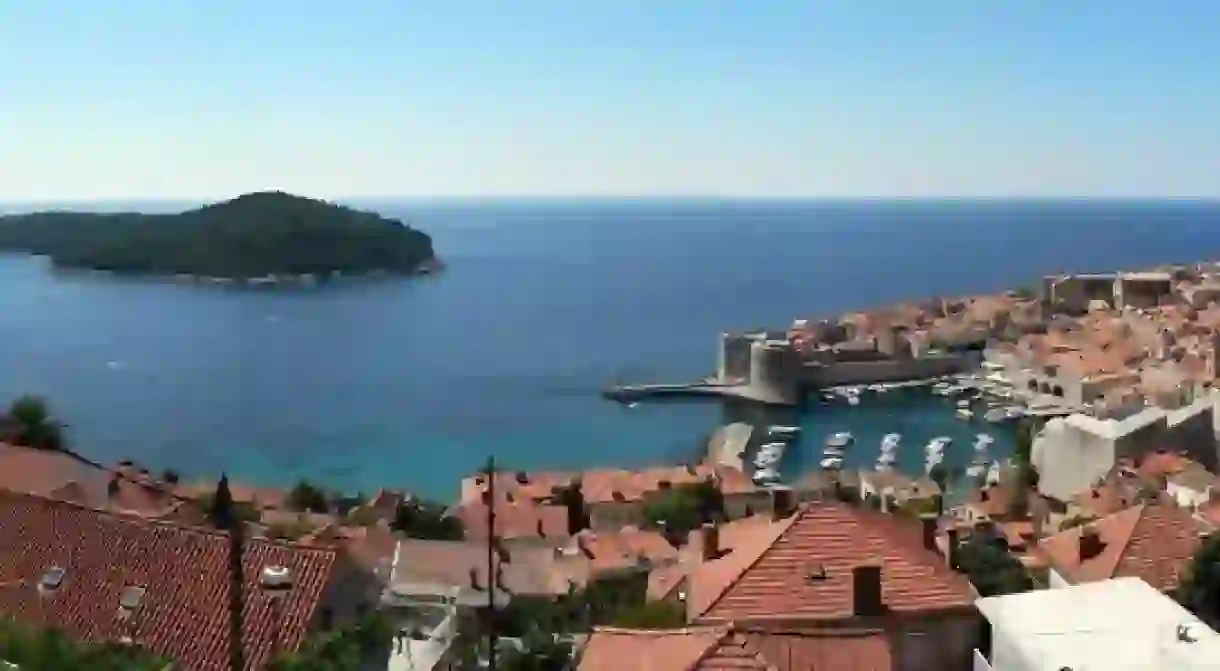The Story Behind Dubrovnik's Haunted Islands

Visitors to Dubrovnik taking in its panoramic sea views cannot fail to notice the idyllic isles that dot the near horizon. The nearest two to the mainland, Lokrum and Daksa, stand bare and undeveloped. While Dubrovnik is crammed with hotels and restaurants, these seemingly rural retreats remain untouched. Lokrum, although frequented by day, has no overnight stays. Daksa is studiously avoided. Why?
A historic resort of celebrated beauty and the Jewel of the Adriatic, Dubrovnik is not just pristine fortifications, fine dining and café culture. Off its coast lie two islands with dark histories. One of them, Lokrum, is accessible by a regularly scheduled, invariably crowded taxi boat. The other, Daksa, is has no links to the mainland. In fact, it’s actually avoided by locals.

Every day, thousands head out from Dubrovnik’s Old Port for a day of tranquil relaxation at Lokrum, with no knowledge of its past. No hotels, tourist villas or guesthouses stand on Lokrum, strange in that it’s only a 15-minute affordable hop from Dubrovnik’s historic Old Town. Staying over is actively discouraged.
Legends and suspicions have surrounded this beautiful island of palm trees and pines since its long-term residents were removed in 1798. Settled on Lokrum since the early 11th century, the community of Benedictine monks were evicted by Napoleon’s troops. The night before their expulsion, the Benedictines placed a curse on those who usurped their sacred ground.
Half a century later, Habsburg Royal Maximilian, younger brother of the Emperor Franz Josef, bought Lokrum. He converted the monastery complex into his pleasure gardens, spending many a happy summer having exotic trees and plants bedded, and colourful birds imported.

To this day, peacocks roam the island and bright flowers bloom. You can still follow the paths lined with Maximilian’s trees. The Habsburg’s grim fate was famously painted by Manet. Agreeing to accept the crown of Mexico, he was captured and then executed by the Republicans. His wife, Charlotte of Belgium, slowly went mad, gazing over the Adriatic from Miramare Castle in Trieste.
From the exclusive Beach Bistro of the five-star Dubrovnik President Hotel, Daksa is just another splash of green in an idyllic panorama of verdant isles lapped by the azure of the Adriatic. Looking at the map, Daksa is so close you could almost swim there. Yet the dotted lines indicating sailing routes studiously avoid it, skirting round for the Elaphiti Islands beyond, or even Bari in southern Italy. Surely it would be easy for the high-end resort hotels dotting the headland of Babin Kuk to lay on a boat or two for guests?

Like Lokrum, in medieval times Daksa was first inhabited by monks, although later well-to-do travellers ignored it, preferring the larger and more accessible island to verdant relaxation.
In October 1944, as Tito’s Partisans were expelling pro-Nazi forces from great swathes of what would become post-war Yugoslavia, they arrived in Dubrovnik. Rounding up hundreds of Fascist sympathisers, including the city’s mayor and local priests, they then took a certain number over to Daksa and executed them.
Citizens were warned not to look for their loved ones. In any case, there were no graves or burial plots. Dubrovnik simply got on with being part of Tito’s Yugoslavia and Daksa was never visited. If it was discussed, the talk turned to ghosts and the bad spirits that haunted the island. In 2009, someone stumbled on the remains of several bodies. Forensic investigation revealed there were 53 adult males, some carrying religious items associated with priesthood. A plot was created for reburials and a memorial erected. Even today, few visit Daksa. Abandoned and overgrown, it keeps its secrets well hidden.













